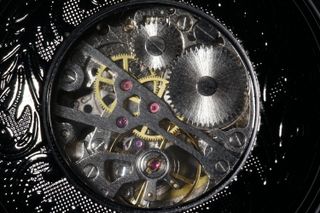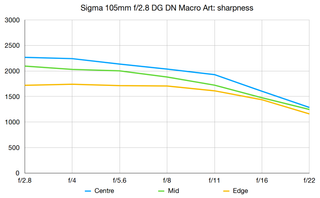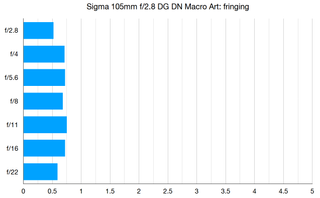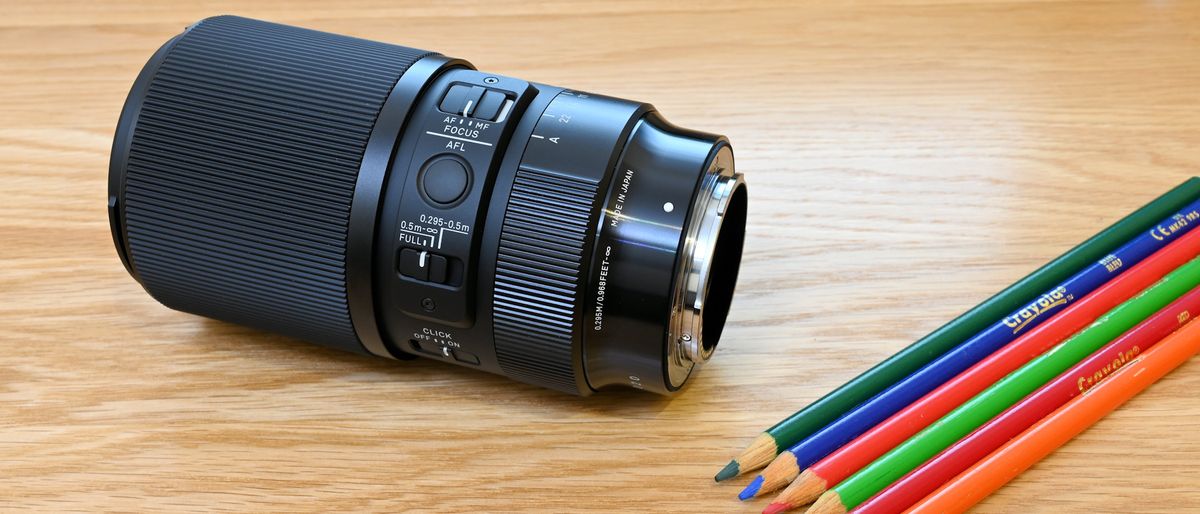Digital Camera World Verdict
For revealing ultra-fine levels of detail in anything from insect and bug photography to extreme close-ups of all things small and smaller, this is a fabulous macro lens. It’s super-sharp and delivers stellar image quality in all respects, while the feature-rich, high-quality build ensures wonderfully refined handling. The lens also works well for portraiture and general short-telephoto shooting with Sony E and Leica L mount cameras, making it a truly versatile optic.
Pros
- +
Spectacular image quality
- +
Great handling
- +
Excellent build quality
Cons
- -
No optical image stabilizer
- -
Narrowest aperture is ‘only’ f/22
- -
Teleconverters currently only available for L-mount edition
Why you can trust Digital Camera World
The Sigma 105mm f/2.8 DG DN MACRO Art is a new version of a favorite lens. We’ve always been impressed with Sigma’s previous 105mm f/2.8 EX DG OS HSM Macro lens, aimed predominantly at Canon and Nikon DSLRs although it’s also available in Sigma, Sony A and even Sony E-mount versions. Indeed, it’s one of the few pre-Global Vision Sigma lenses from before 2012 that’s still going strong on the market today.
However, this new macro lens for Sony E and Leica L mount lenses is something completely different. Unlike some of Sigma’s ‘DG HSM’ lenses that have been repurposed to fit mirrorless E and L mount bodies, the ‘DG DN’ edition of the 105mm macro joins the growing ranks of Sigma’s latest lenses that are designed from the ground up, specifically for E and L mount cameras. As such, it has the usual raft of advanced features and refined handling characteristics.
Specifications
Mount: Sony E, L-mount
Full frame: Yes
Image stabilization: No
Autofocus: Yes
Lens construction: 17 elements in 12 groups
Angle of view: 23.2 degrees
Diaphragm blades: 9
Minimum aperture: f/22
Minimum focusing distance: 0.295m
Maximum magnification ratio: 1.0x
Filter size: 62mm
Dimensions: 74x134mm
Weight: 715g
Key features
Like the vast majority of macro prime lenses, the Sigma has a maximum magnification ratio of 1.0x or 1:1, enabling small objects to be reproduced on the camera’s image sensor at full life size. This affords enormous enlargement at the viewing stage, whether on screen or in print. As always, you need to shoot at the shortest available focus distance to achieve maximum magnification, which in this case is 29.5cm, as measured from the focal plane of the camera body. The lens has fully internal focusing, so the barrel doesn’t extend as you near the shorter end of the focus range. The net results is a comfortable working distance of 14.5cm or just under 6 inches, between the front of the lens and the object you’re shooting.
Sigma claims that the lens’s all-new optical design delivers outstanding rendering performance from the centre of the frame all the way to the extreme edges. As with most macro prime lenses, it has a ‘flat field’ design so field curvature is minimized and, if you shoot something flat from head on, the whole of the area captured by the image circle should be in focus. Even so, depth of field is typically negligible when shooting at or near the shortest focus distance. Some macro lenses have apertures that shrink to f/32, aiming to eek out a little extra depth of field, but the Sigma only goes down to f/22.
Another similarity with most modern macro lenses is that the Sigma works well as a fast, short telephoto prime for general shooting. With a fast and near-silent stepping motor autofocus system, it’s good for shooting wildlife or sporting action, even under dull lighting conditions, where the f/2.8 aperture enables fairly fast shutter speeds without having to bump up your camera’s sensitivity settings too much. It’s equally adept at portraiture, where the f/2.8 aperture produces a fairly tight depth of field.
One thing that’s missing, compared with the older DSLR-biased lens, is that the DG DN has no optical image stabilizer. That’s not really a problem when shooting with later Sony mirrorless bodies, that have IBIS (In Body Image Stabilization), as also featured in Panasonic’s L-mount cameras. One bonus of the L-mount edition is that it’s also compatible with Sigma’s latest 1.4x and 2.0x teleconverters, which can boost the maximum macro magnification to 1.4x or even 2.0x respectively. As of yet, these teleconverters are unavailable in Sony E-mount.
Build and handling
As with other Sigma Art lenses, the build quality of this macro prime is very good indeed. Typical of newer designs in the line-up, it features a comprehensive set of weather-seals, as well as a fluorine coating on the front element to repel moisture and grease.
Handling is significantly improved, compared with the older DSLR-biased lens, with all of the Sigma DG DN trappings that we’ve come to expect. As such, there’s an onboard AF/MF switch plus a customisable function button which is nominally set to Autofocus-Lock by default. There’s also the usual physical aperture ring, towards the rear end of the lens, which comes complete with a ‘Click on/off’ switch. This enables precise aperture adjustments for stills in one-third f/stop increments, or stepless aperture control when shooting video. More of a rarity on DG DN lenses, there’s also an autofocus range limiter switch, which can optionally lock out the long or short end of the range either side of 0.5m.
Performance
The features and build quality are work well together to deliver fabulous overall performance. Autofocus is fast and utterly reliable, while manual focusing is an absolute joy. Due to the incredibly tight depth of field in macro photography and the need for ultimate precision, manual focusing is often preferred to autofocus. The electronically coupled ‘fly-by-wire’ focus ring enables a supremely fine level of manual focusing adjustment, which is great for straightforward macro shooting as well as for focus stacking, where you take a series of shots with incremental focus shift, for merging into a single image at the editing stage.
For actual image quality, the lens lives up to Sigma’s claims, with superb sharpness across the whole image frame, throughout the aperture range, along with excellent contrast. Colour fringing is very well controlled, not only for lateral chromatic aberrations into the extreme corners of the image frame, but also for longitudinal or ‘axial’ chromatic aberrations. The latter often occurs in ‘fast’ lenses when shooting at or near the widest available aperture, typically presenting as green or magenta fringes around high-contrast edges within scenes that are slightly in front of or behind the point of focus. All in all, this macro lens is a top performer.
Sample photos



Lab data
We run a range of lab tests under controlled conditions, using the Imatest Master testing suite. Photos of test charts are taken across the range of apertures and zooms (where available), then analyzed for sharpness, distortion and chromatic aberrations.
We use Imatest SFR (spatial frequency response) charts and analysis software to plot lens resolution at the centre of the image frame, corners and mid-point distances, across the range of aperture settings and, with zoom lenses, at four different focal lengths. The tests also measure distortion and color fringing (chromatic aberration).
Sharpness:

Even when shooting wide-open, the lens is extremely sharp in the centre and mid-frame regions. Sharpness is a little more average at the corners, but still respectable. You can shoot at f/2.8 through to f/11 and be assured of consistently high sharpness at all these apertures.
Fringing:

Lateral chromatic aberration is consistently minimal throughout the aperture range - you're unlikely to spot any fringing in real world shooting.
Distortion: 0.9
There's modest pincushion distortion, but it's not so severe as to be distracting, and it's easily correctable.
Verdict
Reasonably compact and lightweight, Sigma’s 105mm macro lens for Sony E and Leica L mount cameras is easy to live with. It has excellent build quality and a raft of high-end handling attributes, including a physical aperture ring with a declick switch, customisable autofocus hold button, autofocus range limiter, and incredibly high-precision manual focusing, ideal for macro shooting. Compared with Sigma’s older, more DSLR-biased 105mm macro, the DG DN edition costs about 50 per cent more to buy in the USA and is nearly twice the price in the UK, but it’s still very good value for money. It really is an outstanding macro lens.
Read more:
Matthew Richards is a photographer and journalist who has spent years using and reviewing all manner of photo gear. He is Digital Camera World's principal lens reviewer – and has tested more primes and zooms than most people have had hot dinners!
His expertise with equipment doesn’t end there, though. He is also an encyclopedia when it comes to all manner of cameras, camera holsters and bags, flashguns, tripods and heads, printers, papers and inks, and just about anything imaging-related.
In an earlier life he was a broadcast engineer at the BBC, as well as a former editor of PC Guide.

